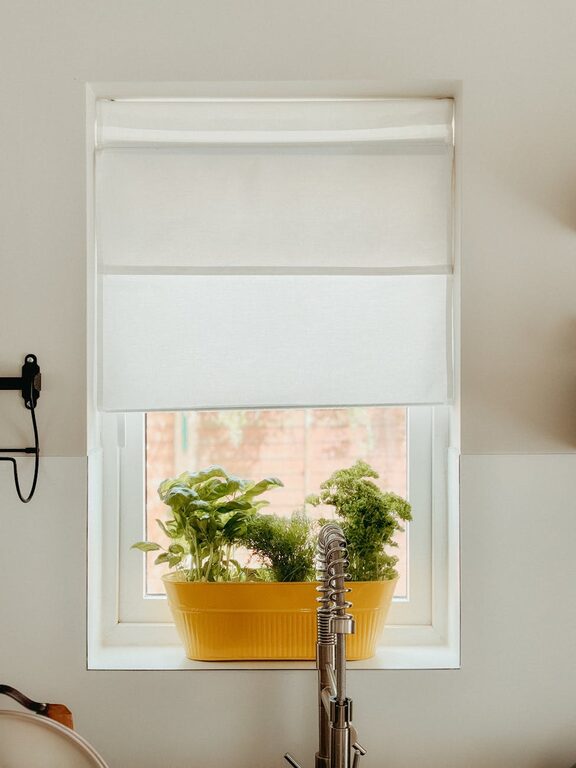
Starting a small herb garden indoors is a wonderful way to bring freshness to your kitchen and add flavor to your cooking. Whether you have limited outdoor space or want to keep herbs close at hand, an indoor herb garden can thrive with just a little care and attention. In this guide, we’ll walk you through everything you need to know to get started, from selecting the right herbs to caring for your plants.
Why Grow Herbs Indoors?
Indoor herb gardens offer several benefits:
– Convenience: Fresh herbs are available whenever you need them.
– Year-round growth: Enjoy herbs even in cold seasons when outdoor plants may not thrive.
– Space-saving: Perfect for apartment dwellers or homes without a yard.
– Healthier cooking: Fresh herbs add great flavor without added salt or sugar.
Choosing the Right Herbs for Indoors
Some herbs are better suited for indoor growth due to their size, light needs, and growth habits. Here are some popular options for beginners:
– Basil: Requires bright light and warmth. Great for Italian dishes.
– Parsley: Tolerates moderate light and is easy to grow.
– Thyme: Low maintenance and loves sunlight.
– Mint: Thrives indoors but can be invasive, so keep it in its own pot.
– Chives: Require moderate light and add a mild onion flavor.
– Oregano: Prefers bright light and dry soil between watering.
– Cilantro: Needs cooler temperatures and good light.
Supplies You’ll Need
Before you start planting, gather these essentials:
– Containers: Small pots or planters with drainage holes.
– Potting mix: Use a light, well-draining potting soil formulated for herbs or indoor plants.
– Seeds or starter plants: Seeds are inexpensive but require patience; starter plants speed up the process.
– Light source: A sunny windowsill or grow lights for adequate light.
– Watering can: For gentle watering.
– Labels: To identify your herbs.
Step-by-Step Guide to Starting Your Herb Garden
1. Choose a Location with Adequate Light
Most herbs need about 6 hours of sunlight daily. South or west-facing windows are ideal. If you lack natural light, consider LED grow lights designed for plants.
2. Select Containers with Drainage
Drainage holes prevent waterlogging that causes root rot. Choose pots that fit your space but are large enough for your herbs to grow comfortably.
3. Prepare Your Potting Mix
Fill your pots with a high-quality, well-draining potting mix. Avoid using garden soil as it’s too dense for indoor plants.
4. Plant Your Seeds or Starter Plants
– For seeds: Follow packet instructions for depth and spacing. Lightly water to moisten the soil.
– For starter plants: Carefully loosen the roots and plant at the same depth as they were in their nursery container.
5. Water Correctly
Water herbs when the top inch of soil feels dry. Overwatering is a common mistake, so it’s better to underwater slightly than to keep the soil soggy.
6. Maintain Proper Temperature and Humidity
Most herbs grow best between 65-75°F (18-24°C). Avoid placing plants near heat vents or drafty windows. Occasional misting can increase humidity but is usually not necessary.
7. Fertilize Sparingly
Feed your herbs with a balanced liquid fertilizer every 4-6 weeks during active growth. Follow the product’s instructions carefully.
Caring for Your Indoor Herb Garden
Pruning and Harvesting
Regularly pinch off the top leaves to encourage bushier growth and prevent flowering, which can reduce flavor. Harvest leaves in the morning when oils are most concentrated.
Watch for Pests
Indoor herbs can attract pests like aphids or spider mites. Inspect plants regularly and treat any infestations promptly with natural remedies such as insecticidal soap.
Rotate Plants for Even Growth
Turn pots every few days to ensure all sides receive equal light and the plants grow evenly.
Troubleshooting Common Problems
| Problem | Cause | Solution |
|—————————–|——————————–|————————————-|
| Yellowing leaves | Overwatering or poor drainage | Reduce watering, check drainage |
| Leggy, spindly plants | Insufficient light | Move to brighter spot or add grow light |
| Wilting or drooping leaves | Underwatering or heat stress | Water thoroughly, check temperature |
| Mold on soil surface | Excess moisture | Allow soil to dry between watering, improve airflow |
Tips for Success
– Start with 2-3 herbs to avoid feeling overwhelmed.
– Use matching pots for a neat, cohesive look.
– Keep herbs away from refrigerator drafts.
– Clean leaves occasionally to remove dust.
Conclusion
Growing a small herb garden indoors is enjoyable and fulfilling, providing fresh herbs for your meals and a touch of green to your living space. With the right herbs, proper care, and patience, you can create a thriving garden right on your windowsill. Happy gardening!
—
If you found this guide helpful, be sure to check out our other gardening tips and DIY projects for your home!
